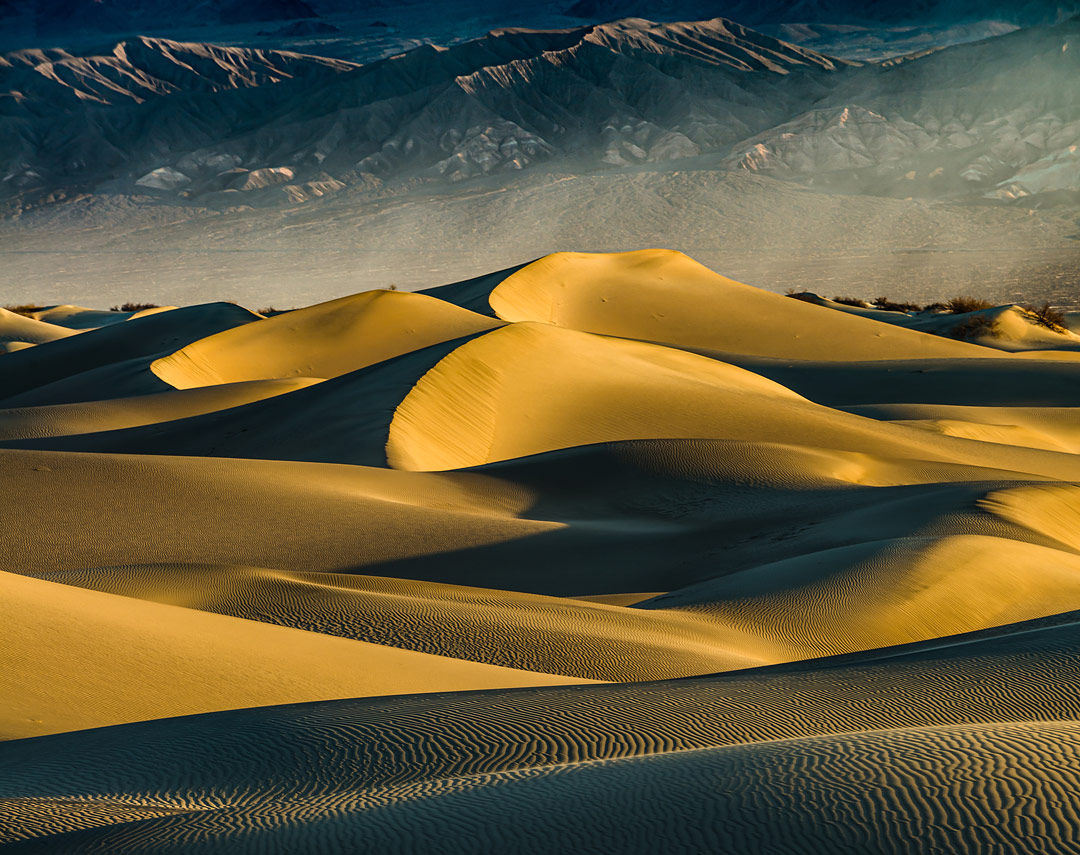Mesquite Flat Sand Dunes in Death Valley National Park is a stunning place for landscape photography. It's shadowed ripples and stark, graceful curves define "desert" in our imagination. The sky and the sun create a magical combination of colors and you’ll be amazed at the textures and the shadows the dunes create.
Mesquite Flat dunes are located in central Death Valley, California near Stovepipe Wells. Access is from Highway 190. It is delightful to hike the dunes during the Winter months of January and February when the temperatures in Death Valley can be quite pleasant. The finest time of day for photography is just before sunrise because of the incredible show of color and light. Long shadows and dramatic light make for fantastic dune photography. It is also ideal to visit after a windstorm because it leaves a smooth, pristine surface, perfect for photos. Mesquite Flat dune field includes three types of dunes: crescent, linear, and star shaped.
It will typically take 20 minutes of easy walking to reach the base of the highest dunes; on the way you'll wander through relatively flat sandy areas marked by cracked mud, creosote and mesquite brush. This unique habitat is home to kit fox, burrowing owls, lizards, rodents and sidewinder rattlesnakes. In the early morning, you can spot animal tracks made during the night, especially the tiny footprints of birds and rodents.
Though shifting winds and gravity alter heights and shapes daily, dunes such as these form over thousands of years as blowing sand reaches an insurmountable obstacle. The dunes are surrounded on all sides by fantastic mountain ranges that, typical of many places in Death Valley, distort distance and depth perception.
This photo was captured looking east to the foothills of the Amargosa mountain range which are in the background. Using my zoom lens at 200mm foreshortened the distance between the dunes and the mountains. In the valley between the dunes and the mountains there was a rainstorm blowing from the north which you can see as a series of pale slanting clouds. Fortunately, the wind associated with this storm was localized and was not affecting, at least for the moment, the dunes and my photography.
Regarding sand and tripods I share a tip: Always extend the smallest diameter, lower section of the tripod legs out first. This will help to reduce the amount of sand and dust that may get into the adjustable leg joints. Before collapsing the tripod legs for storage wipe them down with a clean, dry cloth.


